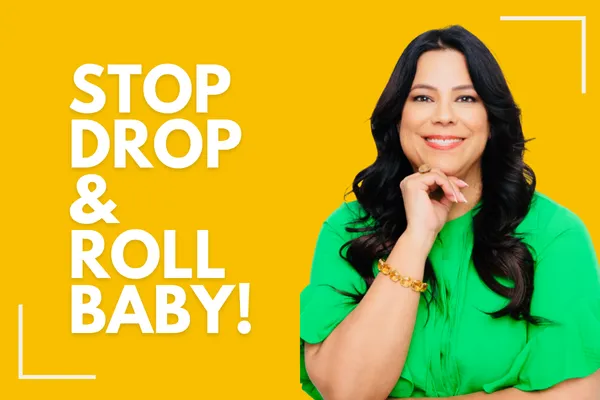
Stop, Drop, and Roll Helping your child
The 'Stop, Drop, and Roll, Baby!' technique — December
Today’s topic: Helping your child.
The 'Stop, Drop, and Roll, Baby!' technique is such a versatile technique. And once you’ve mastered it, it’s time to teach it to your children.
Elementary-age children must navigate various social dynamics and relationships as they interact with their peers, teachers, and other adults. And they often don’t have the skills to navigate these delicate and tender situations at school effectively.
Give your child the gift of the 'Stop, Drop, and Roll, Baby!' technique this Christmas so they can learn how to stop fueling the flames and drop all expectations of repair until adults become involved, making it a present that extends beyond the festive season.
If this is your first time reading the 'Stop, Drop, and Roll, Baby! ' technique mini-series, you’ll want to get up to speed on this unique technique by reading about it here — it saved my marriage!
How to Stop, Drop, and Roll with Children
Stop fueling the flames.
The first step is to help your child stop arguing. Let them know it doesn’t matter what they’re arguing about, who started it, or if they’re right. What matters is that they stop fueling the flames.
When they learn that they can control their side of the dispute and stop arguing, this will keep them physically safe and emotionally whole.
Teach them to walk away by saying:
“Our argument is escalating, and I don’t want to continue engaging. Let’s take a break, cool down, and discuss things with an adult present.”
Then, tell them to walk away.Drop expectations.
To avoid further confrontation, teach them to drop any need for the person they’re butting heads with to apologize for what they’ve done or clarify what happened.
Tell them to use their time away to reflect on what triggered them (not who) and how they’re feeling.Roll into a safe place to express emotions.
This means teaching children to turn to an appropriate place and healthy way to express—not bottle— their feelings. Here are three possibilities:
Art: If your child likes to color, draw, or finger paint, this is an excellent way to get their feelings out.
Word: If your child likes to write, have them write about their feelings.
Pet: If your child has a pet, pouring their heart out to their unconditionally loving friend is therapeutic.
Then, encourage them to show you what they’ve drawn, written, or expressed. This way, you can help them process their feelings and brainstorm options for how to proceed for resolution.
I believe in you to help your children learn how to process their feelings!

